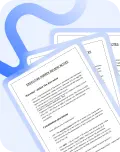#7124 - International Trade Law - International Law
Agreement Establishing the World Trade Organization: This agreement (the Marrakesh Agreement) is really just an index. Substantive rules and agreements are in the annexes.
Main functions of international trade law
To provide a forum to negotiate trade agreements and rules (Dohar negotiations since 2001)
To provide a specific dispute settlement process to resolve trade disputes (rather than taking general measures)
Trade Policy Review Mechanisms: from time to time each country has its trade policies reviewed to see how they are advancing liberal trade
Main goals of international trade law:
General trade liberalisation: there is a presumption that free trade is beneficial to all states
-
Transparency
Prevention of protectionist measures expressed as tariffs
No “disguised protectionism” favouring domestic products or products from particular countries
To help achieve these goals, the following rules apply.
Most favoured nation [discrimination at border]
[X] may argue that [Y state] has breached its obligations to ensure that every state receives the ‘most favoured nation’ treatment by [per facts]. Under this rule, states must not discriminate between like products imported from different WTO members (ie different states) and must treat them the same at the border (GATT Art 1.1).
Exceptions to this rule apply if the discrimination is employed for specific reasons: see GATT Art XX
This rule applies in respect of technical regulations under the Agreement on Technical Barriers to Trade Art 2.1
National treatment [discrimination inside the country]
[X] may argue that [Y state] has breached its ‘national treatment’ obligations by [per facts]. The obligation is to ensure that imports are treated the same as like products of national origin inside the state’s border (GATT Art III.1 and III.4).
-
This rule relates to internal charges (eg taxes), laws, regulations and other requirements
all rules must be the same, whether relating to taxes, environmental requirements, other
This rule applies in respect of technical regulations under the Agreement on Technical Barriers to Trade Art 2.1
This rule applies to intellectual property rights under TRIPS Art 3.1
It is not certain exactly which products would be considered ‘like’
Products that are exactly the same will be ‘like’
-
Where one product could be substituted for another at the same price it is probably a like product
Eg tuna vs salmon: both fish, but uncertain if like product. Tuna vs dolphin-safe tuna? Probably like product.
[X] may argue [Y] has breached its obligations under Art 2.2 of the Technical Barriers to Trade Agreement). Under the article, members must ensure that technical regulations do not have the purpose or effect of creating unnecessary obstacles to international trade.
They are unnecessary if the regulations are ‘more restrictive than necessary’ to fulfil a legitimate objective, some of which are listed in the article.
The ‘least-trade restrictive’ (LTR) process is preferred
The Agreement on Trade-Related Aspects of Intellectual Property Rights:
Art 1.1 states that members shall give effect to the provisions of TRIPS as they see fit
Art 3.1 sets a national treatment requirement in respect of protection of intellectual property [see above]
Art 15.1 provides that any sign/colours/words etc may constitute a trademark and be eligible for registration as such. Members are permitted to make registrability depend on whether the trademark is sufficiently distinctive and visually perceptible.
Art 15.4 provides that the nature of the goods or services to which a trademark is to be applied will not form an obstacle to registration of the trademark.
-
Art 16.1 provides that the owner of a registered trademark shall have the right to prevent third parties using signs that are identical or similar on identical or similar goods where confusion would result.
Confusion is presumed where an identical sign is used on identical goods
Art 16.3 provides that registration of a trademark may be cancelled or refused, and its use prohibited (as stated in Article 6bis of the Paris Convention) where its use in respect of goods or services not similar to those in respect of which a trademark is registered would indicate a connection between the dissimilar goods and the owner of the trademark, and where the owner’s interests would be damaged.
Art 20 states that the use of a trademark shall not be unjustifiably encumbered by special requirements.
The World Trade Organization has a separate dispute resolution process.
Where there is a dispute regarding trade between...
purchase it now!

